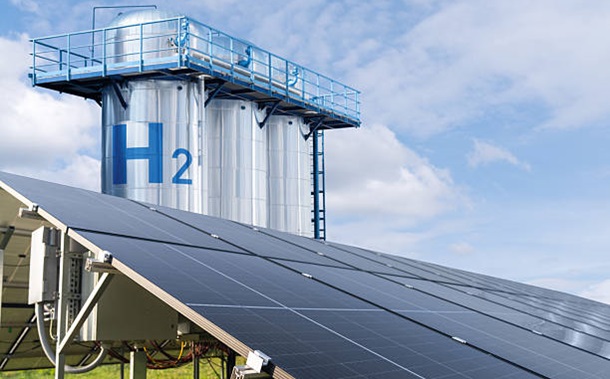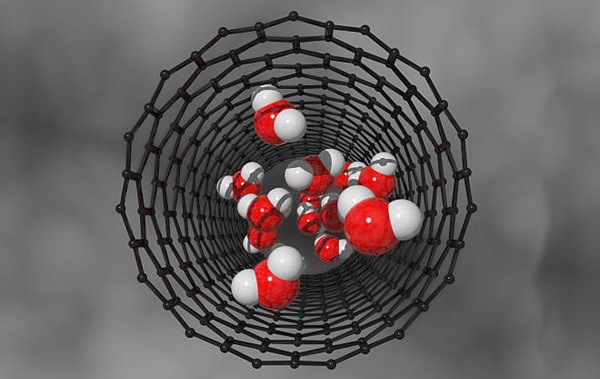PM2.5 IoT Sensor Calibration and Implementation Issues Including Machine Learning
Downloads
Doi:10.28991/ESJ-2024-08-06-08
Full Text:PDF
Downloads
Ali, S., Alam, F., Potgieter, J., & Arif, K. M. (2024). Leveraging Temporal Information to Improve Machine Learning-Based Calibration Techniques for Low-Cost Air Quality Sensors. Sensors, 24(9), 2930. doi:10.3390/s24092930.
Gladson, L. A., Cromar, K. R., Ghazipura, M., Knowland, K. E., Keller, C. A., & Duncan, B. (2022). Communicating respiratory health risk among children using a global air quality index. Environment International, 159, 107023. doi:10.1016/j.envint.2021.107023.
Xu, J., Huang, L., Bao, T., Duan, K., Cheng, Y., Zhang, H., Zhang, Y., Li, J., Li, Q., & Li, F. (2023). CircCDR1as mediates PM2.5-induced lung cancer progression by binding to SRSF1. Ecotoxicology and Environmental Safety, 249, 114367. doi:10.1016/j.ecoenv.2022.114367.
WHO. (2013). Health Effects of Particulate Matter: Policy implications for countries in Eastern Europe, Caucasus and central Asia. World Health Organization, New York, United States.
Xiong, Y., Zhou, J., Schauer, J. J., Yu, W., & Hu, Y. (2017). Seasonal and spatial differences in source contributions to PM2.5 in Wuhan, China. Science of the Total Environment, 577, 155–165. doi:10.1016/j.scitotenv.2016.10.150.
De Vito, S., D'Elia, G., Ferlito, S., Di Francia, G., Davidovič, M. D., Kleut, D., Stojanovič, D., & Jovaševic-Stojanovič, M. (2024). A Global Multiunit Calibration as a Method for Large-Scale IoT Particulate Matter Monitoring Systems Deployments. IEEE Transactions on Instrumentation and Measurement, 73, 1–16. doi:10.1109/TIM.2023.3331428.
Raysoni, A. U., Pinakana, S. D., Mendez, E., Wladyka, D., Sepielak, K., & Temby, O. (2023). A Review of Literature on the Usage of Low-Cost Sensors to Measure Particulate Matter. Earth (Switzerland), 4(1), 168–186. doi:10.3390/earth4010009.
Agbo, K. E., Walgraeve, C., Eze, J. I., Ugwoke, P. E., Ukoha, P. O., & Van Langenhove, H. (2021). A review on ambient and indoor air pollution status in Africa. Atmospheric Pollution Research, 12(2), 243–260. doi:10.1016/j.apr.2020.11.006.
Anderson, J. O., Thundiyil, J. G., & Stolbach, A. (2012). Clearing the Air: A Review of the Effects of Particulate Matter Air Pollution on Human Health. Journal of Medical Toxicology, 8(2), 166–175. doi:10.1007/s13181-011-0203-1.
Si, M., Xiong, Y., Du, S., & Du, K. (2020). Evaluation and calibration of a low-cost particle sensor in ambient conditions using machine-learning methods. Atmospheric Measurement Techniques, 13(4), 1693–1707. doi:10.5194/amt-13-1693-2020.
Lu, Y., Giuliano, G., & Habre, R. (2021). Estimating hourly PM2.5 concentrations at the neighborhood scale using a low-cost air sensor network: A Los Angeles case study. Environmental Research, 195, 110653. doi:10.1016/j.envres.2020.110653.
Lee, C. H., Wang, Y. Bin, & Yu, H. L. (2019). An efficient spatiotemporal data calibration approach for the low-cost PM2.5 sensing network: A case study in Taiwan. Environment International, 130, 104838. doi:10.1016/j.envint.2019.05.032.
Wang, Z., Delp, W. W., & Singer, B. C. (2020). Performance of low-cost indoor air quality monitors for PM2.5 and PM10 from residential sources. Building and Environment, 171, 106654. doi:10.1016/j.buildenv.2020.106654.
Morawska, L., Thai, P. K., Liu, X., Asumadu-Sakyi, A., Ayoko, G., Bartonova, A., Bedini, A., Chai, F., Christensen, B., Dunbabin, M., Gao, J., Hagler, G. S. W., Jayaratne, R., Kumar, P., Lau, A. K. H., Louie, P. K. K., Mazaheri, M., Ning, Z., Motta, N., ... Williams, R. (2018). Applications of low-cost sensing technologies for air quality monitoring and exposure assessment: How far have they gone? Environment International, 116, 286–299. doi:10.1016/j.envint.2018.04.018.
Liu, X., Jayaratne, R., Thai, P., Kuhn, T., Zing, I., Christensen, B., Lamont, R., Dunbabin, M., Zhu, S., Gao, J., Wainwright, D., Neale, D., Kan, R., Kirkwood, J., & Morawska, L. (2020). Low-cost sensors as an alternative for long-term air quality monitoring. Environmental Research, 185, 109438. doi:10.1016/j.envres.2020.109438.
Lin, Y., Dong, W., & Chen, Y. (2018). Calibrating Low-Cost Sensors by a Two-Phase Learning Approach for Urban Air Quality Measurement. Proceedings of the ACM on Interactive, Mobile, Wearable and Ubiquitous Technologies, 2(1), 1–18. doi:10.1145/3191750.
Loh, B. G., & Choi, G. H. (2019). Calibration of Portable Particulate Matter–Monitoring Device using Web Query and Machine Learning. Safety and Health at Work, 10(4), 452–460. doi:10.1016/j.shaw.2019.08.002.
Lecun, Y., Bengio, Y., & Hinton, G. (2015). Deep learning. Nature, 521(7553), 436–444. doi:10.1038/nature14539.
Austin, E., Novosselov, I., Seto, E., & Yost, M. G. (2015). Laboratory evaluation of the Shinyei PPD42NS low-cost particulate matter sensor. PLoS ONE, 10(9), 137789. doi:10.1371/journal.pone.0137789.
Steinle, S., Reis, S., Sabel, C. E., Semple, S., Twigg, M. M., Braban, C. F., Leeson, S. R., Heal, M. R., Harrison, D., Lin, C., & Wu, H. (2015). Personal exposure monitoring of PM2.5 in indoor and outdoor microenvironments. Science of the Total Environment, 508, 383–394. doi:10.1016/j.scitotenv.2014.12.003.
Oluwadairo, T., Whitehead, L., Symanski, E., Bauer, C., Carson, A., & Han, I. (2022). Effects of aerosol particle size on the measurement of airborne PM2.5 with a low-cost particulate matter sensor (LCPMS) in a laboratory chamber. Environmental Monitoring and Assessment, 194(2), 56. doi:10.1007/s10661-021-09715-6.
Alvarado, M., Gonzalez, F., Fletcher, A., & Doshi, A. (2015). Towards the development of a low cost airborne sensing system to monitor dust particles after blasting at open-pit mine sites. Sensors (Switzerland), 15(8), 19667–19687. doi:10.3390/s150819667.
Zervaki, O. (2018). Calibration and Evaluation of Low-Cost Optical Dust Sensors and Monitors. Master's Thesis, University of Cincinnati, Ohio, United States.
Sayahi, T., Butterfield, A., & Kelly, K. E. (2019). Long-term field evaluation of the Plantower PMS low-cost particulate matter sensors. Environmental Pollution, 245, 932–940. doi:10.1016/j.envpol.2018.11.065.
Zheng, T., Bergin, M. H., Johnson, K. K., Tripathi, S. N., Shirodkar, S., Landis, M. S., Sutaria, R., & Carlson, D. E. (2018). Field evaluation of low-cost particulate matter sensors in high-and low-concentration environments. Atmospheric Measurement Techniques, 11(8), 4823–4846. doi:10.5194/amt-11-4823-2018.
Chen, T., & Guestrin, C. (2016). XGBoost: A scalable tree boosting system. Proceedings of the ACM SIGKDD International Conference on Knowledge Discovery and Data Mining, 13-17-August-2016, 785–794. doi:10.1145/2939672.2939785.
Nguyen, C. D. T., & To, H. T. (2019). Evaluating the applicability of a low-cost sensor for measuring PM2.5 concentration in Ho Chi Minh city, Viet Nam. Science and Technology Development Journal, 22(3), 343–347. doi:10.32508/stdj.v22i3.1688.
Koziel, S., Pietrenko-Dabrowska, A., Wojcikowski, M., & Pankiewicz, B. (2024). Efficient calibration of cost-efficient particulate matter sensors using machine learning and time-series alignment. Knowledge-Based Systems, 295, 111879. doi:10.1016/j.knosys.2024.111879.
Lung, S. C. C., Hien, T. T., Cambaliza, M. O. L., Hlaing, O. M. T., Oanh, N. T. K., Latif, M. T., Lestari, P., Salam, A., Lee, S. Y., Wang, W. C. V., Tsou, M. C. M., Cong-Thanh, T., Cruz, M. T., Tantrakarnapa, K., Othman, M., Roy, S., Dang, T. N., & Agustian, D. (2022). Research Priorities of Applying Low-Cost PM2.5 Sensors in Southeast Asian Countries. International Journal of Environmental Research and Public Health, 19(3), 1522. doi:10.3390/ijerph19031522.
Datta, A., Saha, A., Zamora, M. L., Buehler, C., Hao, L., Xiong, F., Gentner, D. R., & Koehler, K. (2020). Statistical field calibration of a low-cost PM2.5 monitoring network in Baltimore. Atmospheric Environment, 242, 117761. doi:10.1016/j.atmosenv.2020.117761.
Munir, S., Mayfield, M., Coca, D., Jubb, S. A., & Osammor, O. (2019). Analysing the performance of low-cost air quality sensors, their drivers, relative benefits and calibration in cities”a case study in Sheffield. Environmental Monitoring and Assessment, 191(2), 94. doi:10.1007/s10661-019-7231-8.
Spinelle, L., Gerboles, M., Villani, M. G., Aleixandre, M., & Bonavitacola, F. (2015). Field calibration of a cluster of low-cost available sensors for air quality monitoring. Part A: Ozone and nitrogen dioxide. Sensors and Actuators, B: Chemical, 215, 249–257. doi:10.1016/j.snb.2015.03.031.
Spinelle, L., Gerboles, M., Villani, M. G., Aleixandre, M., & Bonavitacola, F. (2017). Field calibration of a cluster of low-cost commercially available sensors for air quality monitoring. Part B: NO, CO and CO2. Sensors and Actuators, B: Chemical, 238, 706–715. doi:10.1016/j.snb.2016.07.036.
Jeon, H., Ryu, J., Kim, K. M., & An, J. (2023). The Development of a Low-Cost Particulate Matter 2.5 Sensor Calibration Model in Daycare Centers Using Long Short-Term Memory Algorithms. Atmosphere, 14(8), 1228. doi:10.3390/atmos14081228.
Kaliszewski, M., WŠ‚odarski, M., MŠ‚yńczak, J., & Kopczyński, K. (2020). Comparison of low-cost particulate matter sensors for indoor air monitoring during covid-19 lockdown. Sensors (Switzerland), 20(24), 1–17. doi:10.3390/s20247290.
Vajs, I., Drajic, D., & Cica, Z. (2023). Data-Driven Machine Learning Calibration Propagation in A Hybrid Sensor Network for Air Quality Monitoring. Sensors, 23(5), 2815. doi:10.3390/s23052815.
- This work (including HTML and PDF Files) is licensed under a Creative Commons Attribution 4.0 International License.



















